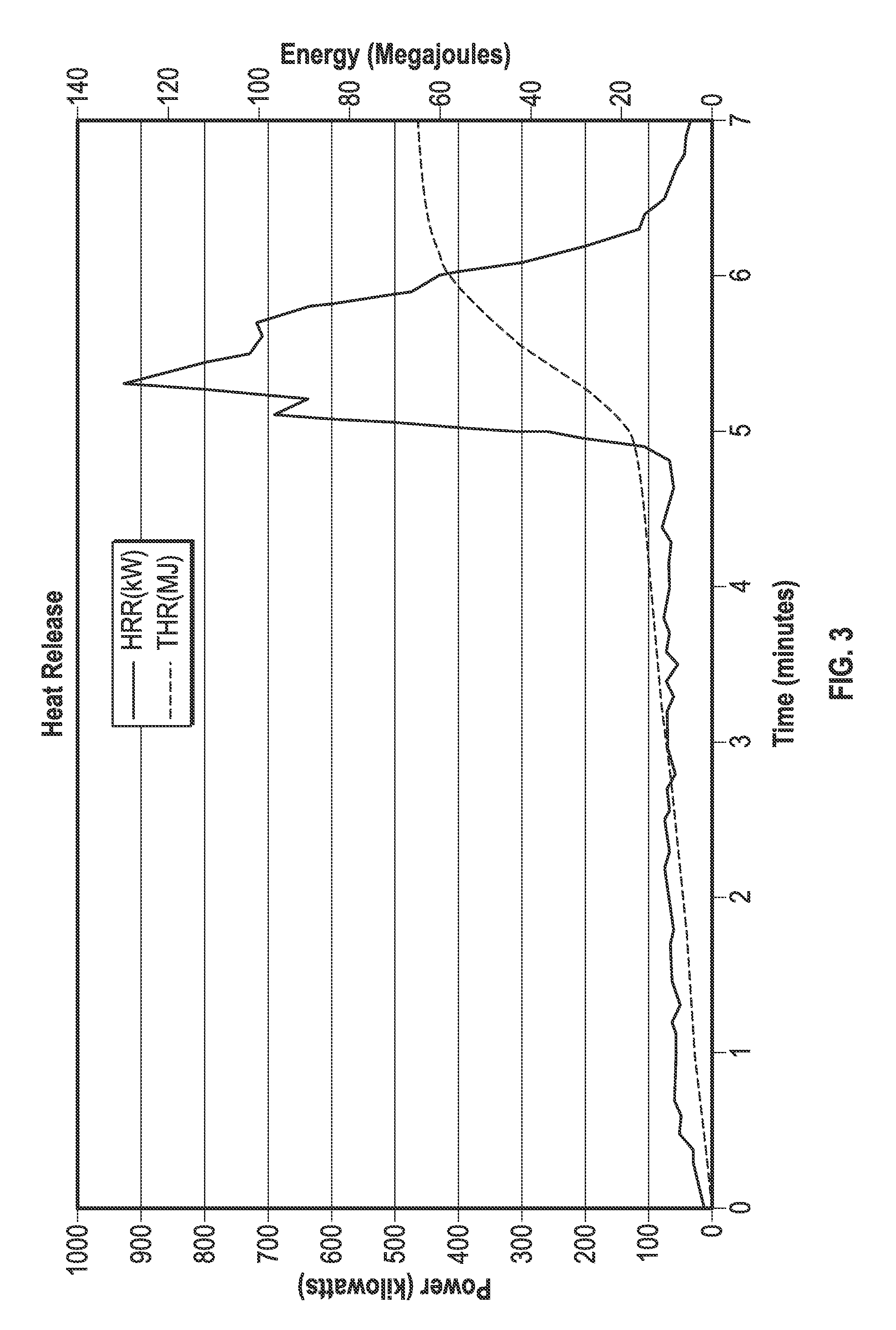Sugar-Based Polyurethanes, Methods for Their Preparation, and Methods of Use Thereof
a technology of sugar-based polyurethanes and polyurethanes, which is applied in the field of sugar-based polyurethanes and their manufacture, can solve the problems of limited commercial development of plastic foams, limited use of sugar-based polyurethanes, and large quantities of noxious smok
- Summary
- Abstract
- Description
- Claims
- Application Information
AI Technical Summary
Benefits of technology
Problems solved by technology
Method used
Image
Examples
example 1
Preparation of 1 pcf (lb / ft3) Polyurethane Foam
[0164]The first mixture, or B-side, is the resin side. Sucrose (89%, 67.5 brix), a natural polyol (provided by Imperial Sugar Co., Sugar Land, Tex.), is mixed with approximately 5% by weight water, and formed into a solution. A surfactant (1.75 Dabco DC5604) is then added to the sucrose mixture, with stirring. Catalysts, such as the amine catalysts BL-19 (bis(2-dimethylamino ethyl)ether; available from Air Products), 3%, and Polycat 31 (4%; a low emission amine catalyst designed for low density, water blown, open cell SPF, available from Air Products), are then added with stirring, followed by an emulsifier (NP-9), and a chain linker (DEOA LF (di-ethanolamine 85% and 15% water); available from Air Products & Chemicals, Inc., Allentown, Pa., “Air Products”). Optional ingredients, such as D-400, a polyethylene oxide copolymer with 1,6-diamines, added as a gelling agent, may also be added at this point.
[0165]The second mixture, or A-side, ...
example 2
Preparation of a 0.5 pcf (lb / ft3) Polyurethane Foam
[0168]The first mixture, or B-side, is the resin side. Sucrose (57 parts, 67.5 brix), a natural polyol (provided by Imperial Sugar), as either a solution or as an invert solution, is mixed with about 5% by weight water, and formed into an initial sucrose solution. A surfactant (1.75% Dabco® DC5604) is then added to the sucrose mixture, with stirring. A plasticizer / flame retardant TMCP (tris(2-monochloroisopropyl)phosphate; 27 parts) is then added, with stirring. Catalysts, such as the amine catalysts BL-19 (bis(2-dimethylamino ethyl)ether; available from Air Products), 3%, and Polycat 31 (4%; a low emission amine catalyst designed for low density, water blown, open cell SPF, available from Air Products), are then added with stirring, followed by an emulsifier (NP-9, EM-400, or the like), and a chain linker (DEOA LF (di-ethanolamine 85% and 15% water, about 3%; available from Air Products & Chemicals, Inc., Allentown, Pa., “Air Produ...
example 3
Preparation of a Modified 0.5 pcf (lb / ft3) Polyurethane Foam
[0171]B-side resin formulation: Imperial Sugar Company liquid sucrose (55 parts by total weight, 67.5 Brix), 5 parts water, 1.5 parts of Dabco® DC5604 surfactant (available from Air Products), 24 parts of a suitable plasticizer / flame retardant, such as TMCP (tris(2-monochloroisopropyl)phosphate, 3 parts of BL-19 (bis(2-dimethylamino ethyl)ether, available from Air Products) as a blowing catalyst, 0 parts Air Products Polycat® 31 (a low-emission amine catalyst design for low density, water blown, open cell SPF), 0.5 parts of diethanol amine (DEOA), a low molecular weight catalytic chain extender, 7.5 parts of 9.5 molar nonylphenol plasticizer, and 4 parts of 1,3-propane diol, a low molecular weight chain extender. All of the B-side ingredients were admixed together and prepared in a manner similar to that described in Example 2.
[0172]The A-side component is a modified MDI (methylene diphenyl diisocyanate), (100 parts), parti...
PUM
| Property | Measurement | Unit |
|---|---|---|
| Fraction | aaaaa | aaaaa |
| Fraction | aaaaa | aaaaa |
| Fraction | aaaaa | aaaaa |
Abstract
Description
Claims
Application Information
 Login to View More
Login to View More - R&D
- Intellectual Property
- Life Sciences
- Materials
- Tech Scout
- Unparalleled Data Quality
- Higher Quality Content
- 60% Fewer Hallucinations
Browse by: Latest US Patents, China's latest patents, Technical Efficacy Thesaurus, Application Domain, Technology Topic, Popular Technical Reports.
© 2025 PatSnap. All rights reserved.Legal|Privacy policy|Modern Slavery Act Transparency Statement|Sitemap|About US| Contact US: help@patsnap.com



